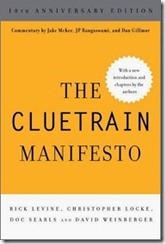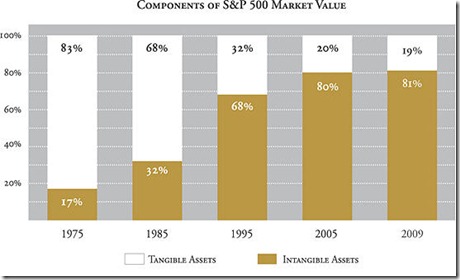 This post is adapted from a commentary written for the Spark Interactive / ClerkWell 2012 Digital Customer Experience Report – an annual industry report that focuses on customer engagement and how businesses are using digital means to build closer relationships and interact with their consumers.
This post is adapted from a commentary written for the Spark Interactive / ClerkWell 2012 Digital Customer Experience Report – an annual industry report that focuses on customer engagement and how businesses are using digital means to build closer relationships and interact with their consumers.
You can download the report from the Spark Interactive website. It contains excellent data and analysis.
Customer engagement is directly linked to employee development. If employees don’t understand how to delight their customers, then their organisations will almost certainly fail.
The role that learning and development professionals play in this process is critical. If they are to deliver value they must focus on the things that matter and use the best approaches possible to help their organisations delight customers.
——————————
Lessons from The Cluetrain
 Back in 1999 the authors of The Cluetrain Manifesto posited the significant ways the Internet and associated technologies would transform all business activity. “Markets are conversations” they said, and “companies that assume online markets are the same markets that used to watch their ads on TV are kidding themselves”.
Back in 1999 the authors of The Cluetrain Manifesto posited the significant ways the Internet and associated technologies would transform all business activity. “Markets are conversations” they said, and “companies that assume online markets are the same markets that used to watch their ads on TV are kidding themselves”.
Equally, resilient companies understand that what constituted value in the past has changed significantly, too.
No-one would now argue that The Cluetrain Manifesto authors got it wrong. Speak to anyone across any number of industries – travel, consumer marketing, newspapers, finance and banking, and elsewhere – and you’ll hear how the new communication technologies have disintermediated the flow of information and changed the perception of value. What were once premium services can now be obtained or executed at the click of a button.
Intangible Trends
Twenty-five years ago intangible assets accounted for around one third of the valuation of U.S. companies. By the turn of the millennium more than 80 per cent of that value was intangible.
Value has migrated from property, plant and equipment to ideas, relationships, intellectual property and reputation. From assets created by people’s hands to asset held inside people’s head and hearts.
As times passes the importance of these intangible assets, particularly of relationships (rich social networks) and reputation (customer centricity) will only increase.
The Agility Imperative
The impact of these changes are manifest no more starkly than in workers’ ability to delight customers.
No longer can workers expect their employers’ formal learning and training approaches to meet their needs. The past world where development was ‘delivered’ in a way decided by learning professionals – packaged and inflexible – simply isn’t adequate for today’s fast-moving and always-changing world. The imperative for business agility and increased customer focus demands ‘learning at the speed of business’, and social networks and new communication channels are essential tools and conduits to achieve appropriate levels of responsiveness.
This increased rate of change and demand for agility doesn’t accommodate the rigidity and lag times of formal training and development. Workers today expect to drive their own development based on (ever changing) personal needs, and they expect to do it in the context of their work and together with their colleagues.
They also expect to manage their development in consort with their wider social networks – both within and outside their work. The loose ties with people outside our organisations provide insights that would never come from colleagues, so the value for organisations is significant, too.
However the answer is not simply ‘building relationships’. A recent Harvard Business Review article pointed out that customers don’t necessarily want ‘relationships’. What they want is help in making decisions. Deep down, every customer-facing worker also knows this. The single biggest driver of customer ‘stickiness’, by far, is decision simplicity.
All of these factors point to the need for new skillsets, new capabilities and new support approaches for staff in customer-facing roles, and there is no doubt that new social tools and approaches will be the bedrock. No organisation will escape the inexorability of the need to provide better customer experiences. Changing approaches to employee development are a critical element in that process.
David Weinberger, one of the authors of The Cluetrain Manifesto sums the situation up well:
“Your organization is becoming hyperlinked. Whether you like it or not. It’s bottom-up; it’s unstoppable.”
————
The Cluetrain Manifesto by Chris Locke, Doc Searls, David Weinberger & Rick Levine http://www.cluetrain.com/
‘To Keep Your Customers, Keep It Simple’. Spenner & Freeman. HBR May 2012. http://hbr.org/2012/05/to-keep-your-customers-keep-it-simple/ar/1
——-
#itashare

 ConsultMember of the Internet Time Alliance and Co-founder of the 70:20:10 Institute, Charles Jennings is a leading thinker and practitioner in learning, development and performance.
ConsultMember of the Internet Time Alliance and Co-founder of the 70:20:10 Institute, Charles Jennings is a leading thinker and practitioner in learning, development and performance.